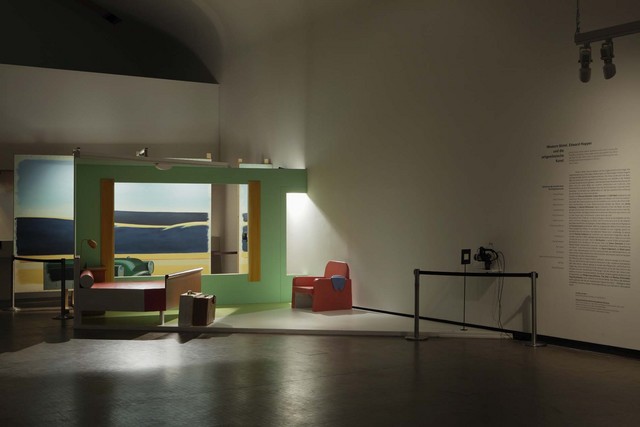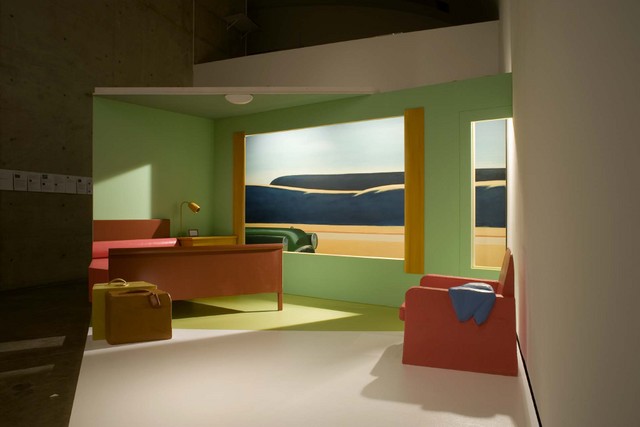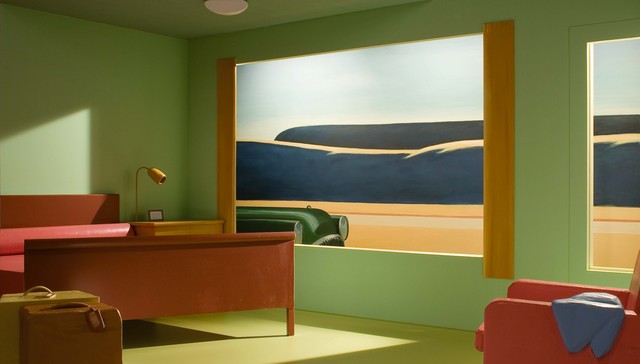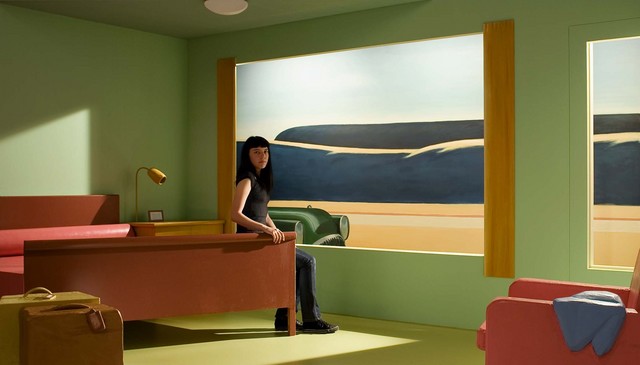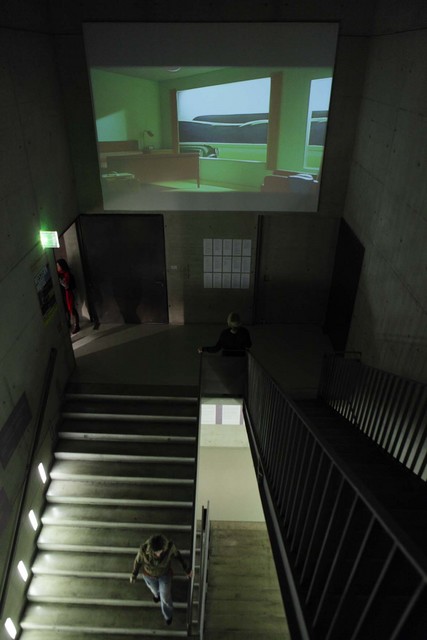VISIONS OF REALITY - Wednesday, 28. August 1957, 6.pm., Pacific Palisades
The film
SHIRLEY - VISIONS OF REALITY brings to life thirteen paintings by the American painter Edward Hopper (1882 – 1967). Similar to tableaus vivants—a popular theatrical entertainment of the 19th century—the people depicted in Hopper’s paintings will become the protagonists in mini-dramas. The “snapshots” of the paintings will each be extended to a period of six minutes either before or after the events shown.
The film shows the episodes—and Hopper’s reconstructed paintings—chronologically over the course of one fictive day and night (from the 28th to the 29th of August) covering a period of 34 years, from 1931 till 1965. The order corresponds to the time of day or night depicted in the paintings or their subject (some of the titles already refer to this: Morning Sun, Night Window, Office at Night), as well as the year they were made.
VISIONS OF REALITY is a film that, above all, also achieves its impact by means of the soundtrack. As with Hopper’s pictures, the “outside world”, the “unseen”, determins events. Street sounds, music from the radio, events in neighbouring rooms are to be “visualised” by means of the soundtrack and will make the relevant year clear i.e. when the picture was made, the year in which the episode plays. As in Hopper’s pictures, the protagonists in the episode react to these off scene sounds and thus come into contact with the outside world.
The installation
The point of departure of VISIONS OF REALITY is the world of visual arts.
The idea to explore the depiction of reality not only by means of film, but also with the aid of the exhibition medium, seems obvious.
The settings of VISIONS OF REALITY are created in co-operation with representatives from the fields of painting, architecture and music. The artist Hanna Schimek, for example, visualises the landscapes outside the windows in Hopper’s works and the pictures shown on the walls in the form of paintings corresponding to the real size. This once again focuses on the theme of the exhibition – staging reality, imagining reality – with the devices of painting.
Because the film sets were only built for a specific camera position – the camera always retains the angle of viewing of the paintings, i.e. with a skewed perspective and only true to detail from the viewing side – visitors will be able to move around in anamorphic three-dimensional reconstructions of Hopper’s paintings.
Only then does it become clear that – contrary to the ostensible fidelity to reality – they actually often display false perspectives, unreal direction of light and shadows. The visitors perceive the barely noticeable distortions of perspective in the film and thus experience the tension between film reality and actual reality.
On the one hand, the exhibition permits visitors to look “behind the scenes” of the cinema illusion machine while, on the other hand, giving them the opportunity to enter the film sets and thus putting them in the role of the actors in the film and the figures in Hopper’s paintings.
A live video camera that is set up to record exactly the same detail of Hopper’s painting, also records the movements and activities of the public. The recordings are projected live in the rear part of the installation.
Wednesday, 28th of August, 1957, 6 p.m., Pacific Palisades, the first set of the planned film, was to be seen as an interactive installation together with 10 working models and an excerpt from the script at Kunsthalle Vienna from 3.10.2008 until 15.2.2009 as part of the exhibition Edward Hopper and Contemporary Art.
Team Installation Kunsthalle Wien:
Concept und Realisation
Gustav Deutsch
Illusionary painting and colour concept
Hanna Schimek
Assistence painting
Peter Niedermair
Object design
Richard Pirker
Architectural Advice
Arch DI Franz Berzl
Support
Filmfonds Wien, BMUKK Innovative Film, Kunsthalle Wien


